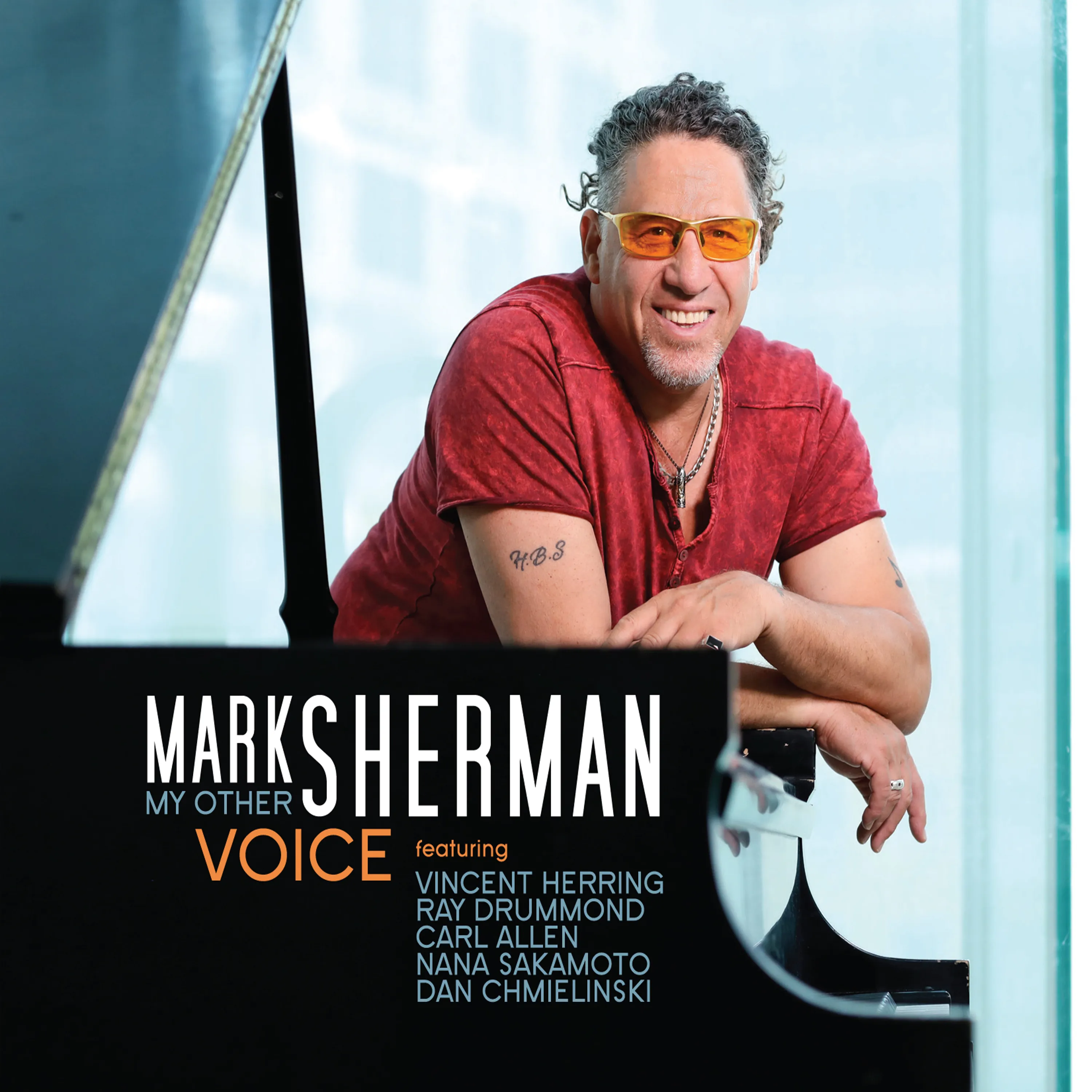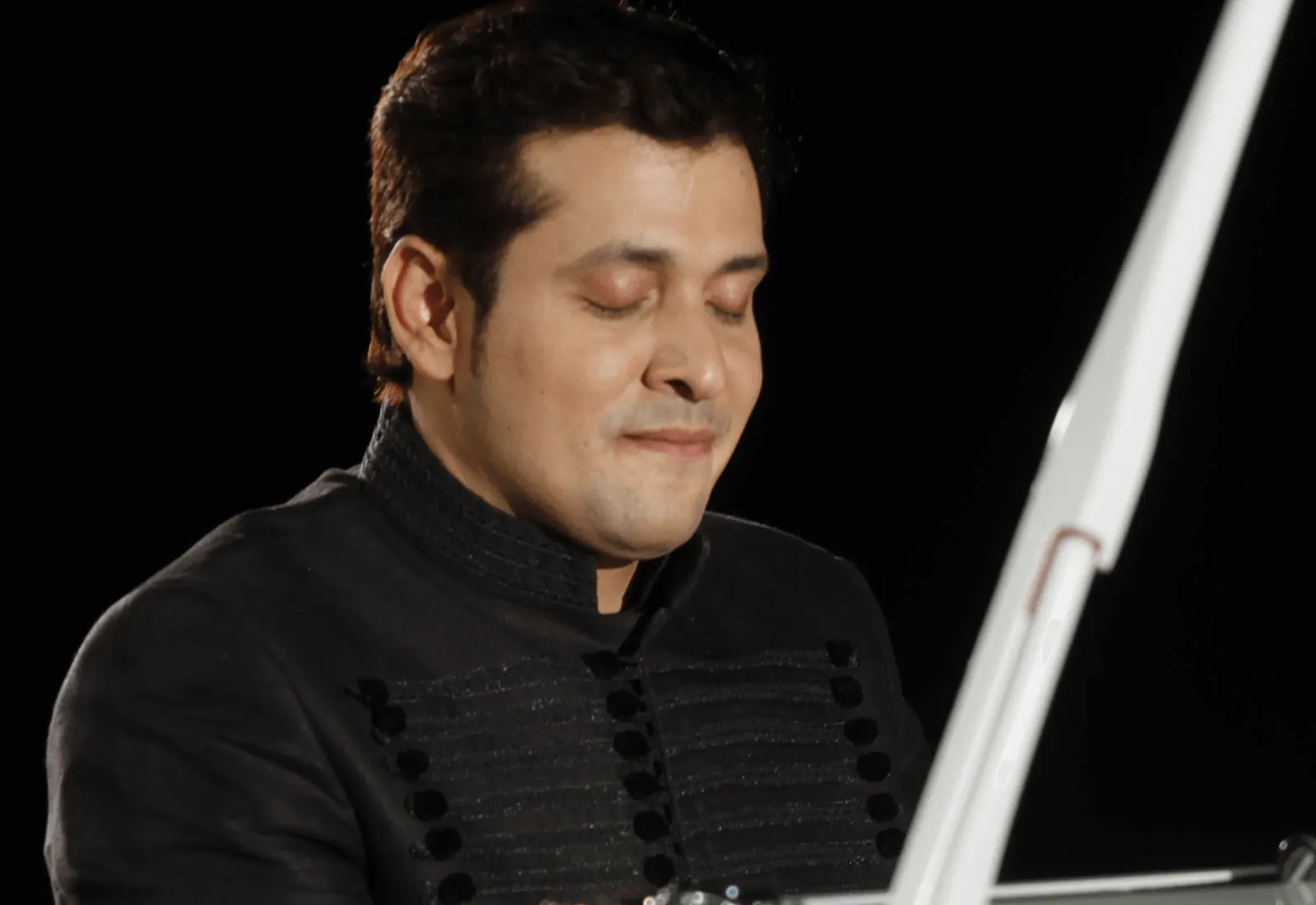Learn How to Play Piano: A Complete Step-by-Step Guide
Learning how to play the piano is an exciting and fulfilling experience that anyone can begin, regardless of age or background. If you're wondering how to learn piano or searching for the best way to learn how to play piano, you're in the right place. From understanding basic notes and finger placement to mastering full songs, the piano offers endless opportunities to grow musically and creatively. Let’s explore the essential steps to help you start your piano journey with confidence.
10 Easy Steps to Learn Piano
1. What All You Will Need to Get started
2. Know the Piano Keyboard
3. Right Hand Practices
4. Left Hand Practices
5. Finger Exercise
6. Play in Rhythm
7. Play a Simple Song
8. Play the Full C Major Scale
9. Playing with Both the Hands
10. How to Play Chords
1. What All Will You Need to Get started
First, decide whether you want to learn on a piano or a keyboard. You could choose any one between a 61-key digital keyboard and a full 88-key acoustic piano.
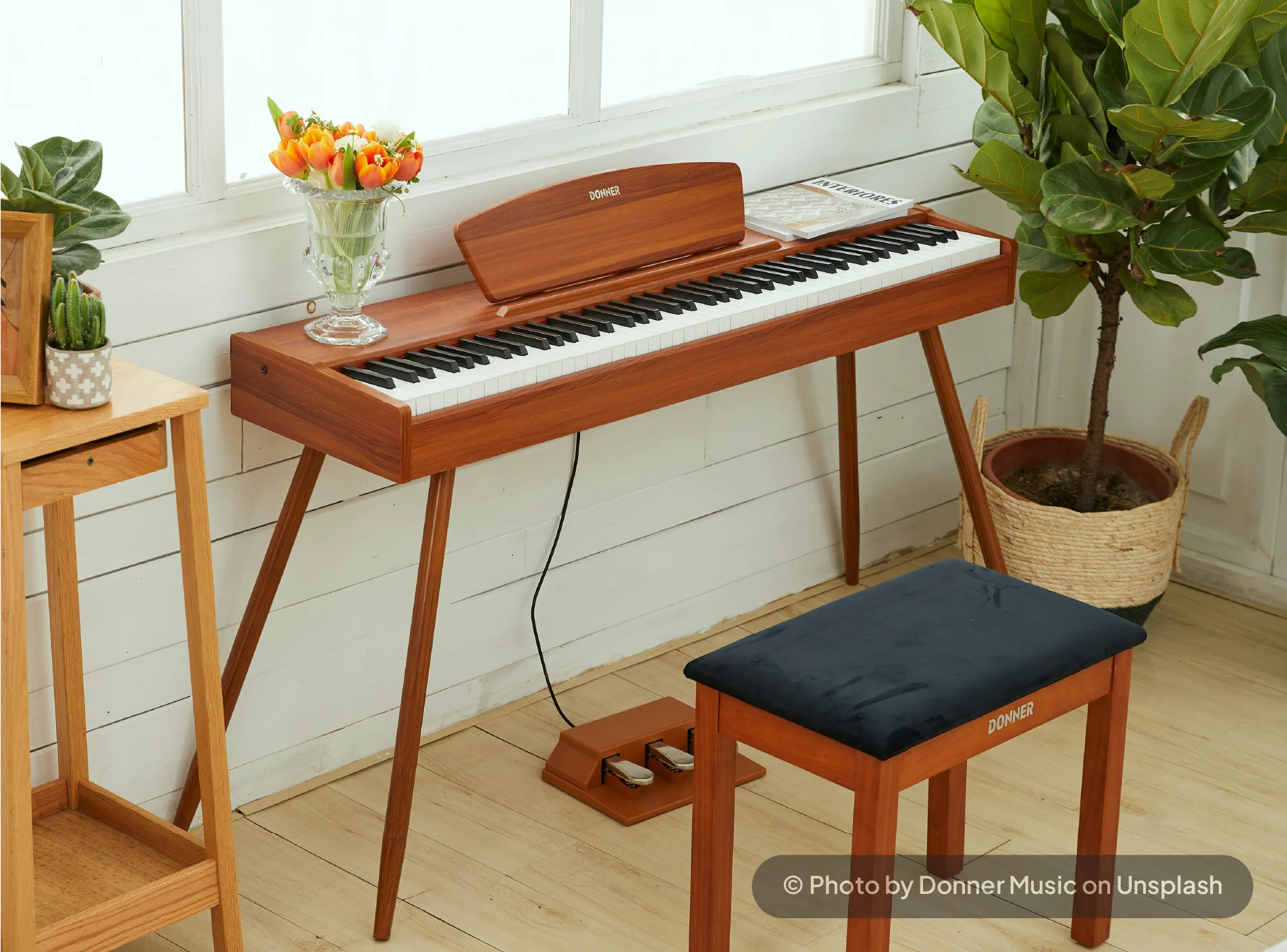
A comfortable bench or chair is also important, as good posture makes a big difference when playing. Try to set up in a quiet space where you can focus without distractions.
If you're using a digital keyboard, a pair of headphones can be a great addition for quiet practice, especially in shared spaces.
2. Know the Piano Keyboard
Understanding the layout of the piano keyboard is an important first step in your journey to learn piano. While it might look a bit overwhelming at first, there’s a very simple and consistent pattern behind it. A full-sized piano has 88 keys, but smaller keyboards with 61 or 76 keys follow the same pattern, so the concepts remain the same no matter what you’re playing on.
The White Keys
The white keys are named as A, B, C, D, E, F, and G. Once you reach G, the pattern starts over again at A. So, moving from left to right across the keyboard, you’ll see this sequence repeat over and over: A - B - C - D - E - F - G - A - B - C, and so on.
The Black Keys
To help you find your place on the keyboard, the black keys are arranged in a repeating pattern of twos and threes. These are important visual markers. For example, if you find a group of two black keys, the white key just to the left of the first black key is C. If you look for a group of three black keys, the white key just to the left of the first one is F. These reference points make it easier to locate other notes around them.
Finding the Middle C
Middle C is another important note for beginners. On a full-sized piano, it’s typically the fourth C from the left and sits near the middle of the keyboard. On smaller keyboards, it’s found roughly at the center. Middle C is a common starting point because it’s where the left and right hands meet when reading sheet music.
You have to understand the pattern of white keys to be able to understand how notes, scales, and chords work on the piano. Once you become familiar with it, you’ll be able to recognize notes more quickly and build the confidence to explore more complex pieces. It’s the foundation for everything you’ll play, and with a little practice, it soon becomes second nature.
3. Right-Hand Practices
When starting on the piano, your right hand usually takes the lead in playing melodies. This makes it especially important to develop finger strength, coordination, and control.
Here, you should note that there is a number assigned to each finger. For the right hand, your thumb is 1, index finger is 2, middle finger is 3, ring finger is 4, and your little finger (pinky) is 5. These finger numbers will appear in sheet music or tutorials, guiding you on which finger to use for each key.
A great exercise to begin with is the five-finger position on the C major scale. Place your thumb on Middle C and let the rest of your fingers naturally rest on the next white keys—D, E, F, and G. Try playing these notes one by one: C, D, E, F, G, and then go back down to C. Do this slowly and evenly. It helps train your fingers to press each key with control. Repeating this pattern several times a day will begin to build muscle memory and comfort.
4. Left-Hand Practices
The finger numbers are the same: thumb is 1, pinky is 5, but you’ll be playing in a slightly lower range. Place your pinky (finger 5) on the note C below Middle C, with the rest of your fingers resting on D, E, F, and G. Just like with the right hand, play the notes slowly up and down: C - D - E - F - G - and back. Try to keep your wrist relaxed and your fingers curved, pressing each key firmly but gently.
5. Finger Exercise
To strengthen each finger individually, try pressing one finger at a time while keeping the others gently resting on the keys. For example, press down D with your second finger while letting the rest of your hand stay relaxed on the keys. Then do the same with each finger. At first, this may feel awkward—especially with your ring finger—but it's great for finger independence and control.
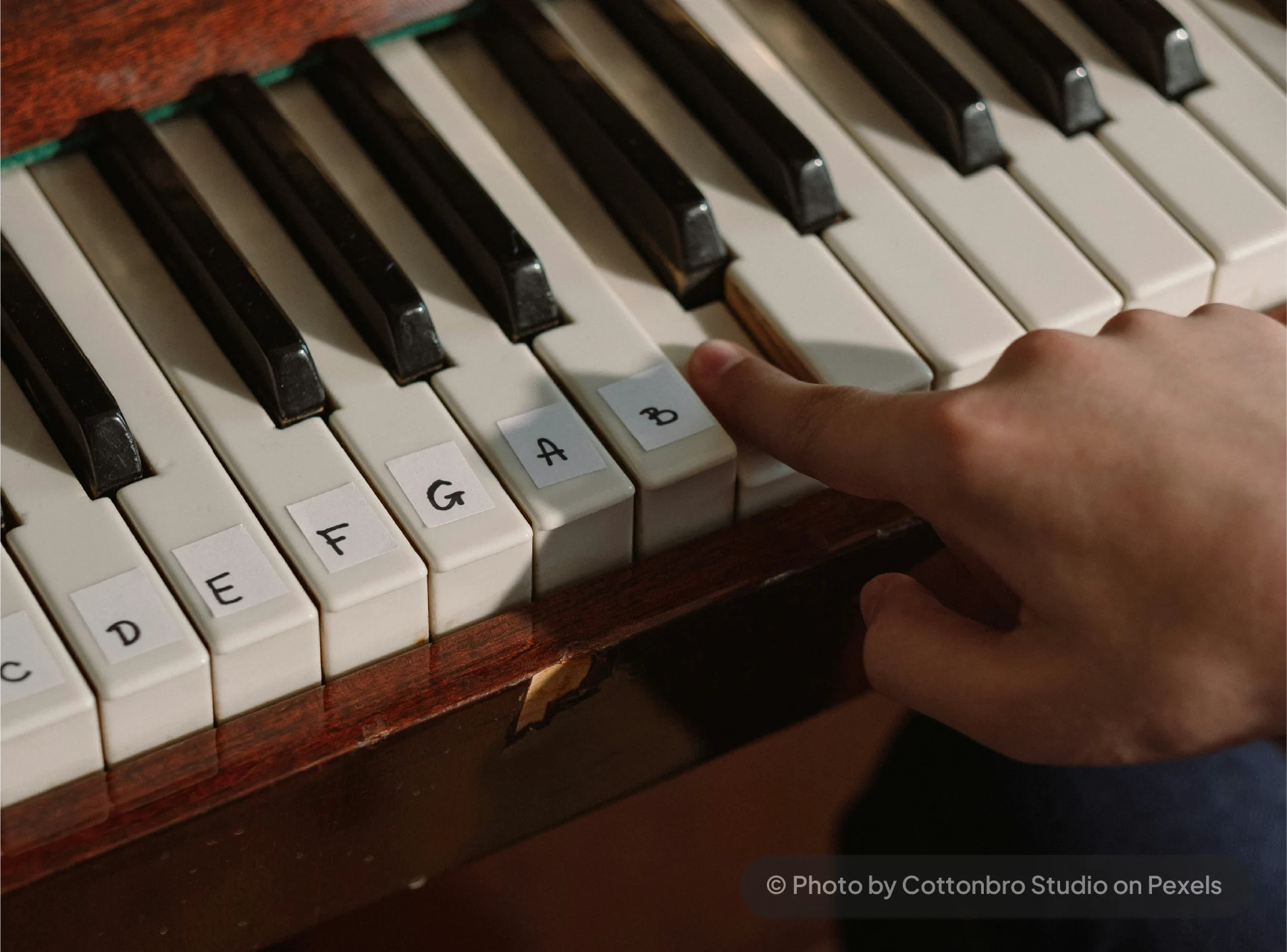
6. Play in Rhythm
Once you feel comfortable with the notes, you can start adding rhythm to your practice. Try playing the five notes with an even beat, holding each note for one count. Then mix it up by holding some notes longer and others shorter. This helps your hand get used to following rhythm and timing, an essential part of playing real music.
7. Play a Simple Song
When your fingers feel more confident, try playing simple songs using just your right hand. Tunes like “Twinkle Twinkle Little Star,” “Mary Had a Little Lamb,” or “Happy Birthday” are great because they’re easy, familiar, and fun to play. These songs help you turn the exercise into music, making the learning process more exciting and meaningful.
Later, when you learn how to play piano and become a little confident, you can try playing some easy piano songs for beginners.
8. Play the Full C Major Scale
As your hand gets stronger, you can begin stretching beyond the five keys by learning the full C major scale. This adds notes like A and B and teaches you how to move your thumb under your fingers smoothly after playing E, so you can continue up the keyboard. This thumb movement is one of the key techniques for playing scales and melodies with flow.
While practicing, try to keep your hand relaxed and your fingers gently curved. Avoid any tension in your wrist or shoulders. Go slowly at first and focus on accuracy and smooth motion. With just a little time each day, these small exercises will help your right hand grow strong and confident, setting the foundation for beautiful piano playing ahead.
9. Playing with Both Hands
When you’re feeling confident, it’s time to try using both hands together. This part demands patience, but it’s also really rewarding. A good way to start is by playing the same note with both hands at the same time, like both hands playing C together. From there, try letting your left hand play a simple, steady note, like holding down C, while your right hand plays a short melody above it. Go slowly. Your brain and hands are learning to coordinate, and that takes a little time.
As you practice, keep your hands relaxed, your fingers gently curved, and your shoulders loose. Focus on accuracy and smooth motion, not speed. Even just 10 to 15 minutes a day will help you improve steadily. Before long, you’ll find that your hands start working together more naturally and the music begins to flow.
And most importantly, have fun with it. Piano isn’t just about technique; it’s about expression and enjoyment. You're not just learning notes—you’re learning how to speak through music. Keep at it, and you’ll be surprised at how far a little regular practice can take you.
10. How to Play Chords
If you're just starting to learn the piano, you’ve probably heard people mention chords a lot. They’re a big part of what makes songs sound full and rich, but what are they exactly, and how do you play them? Don’t worry, it’s a lot easier than it sounds, and once you get the hang of it, chords will become your best friends on the piano.
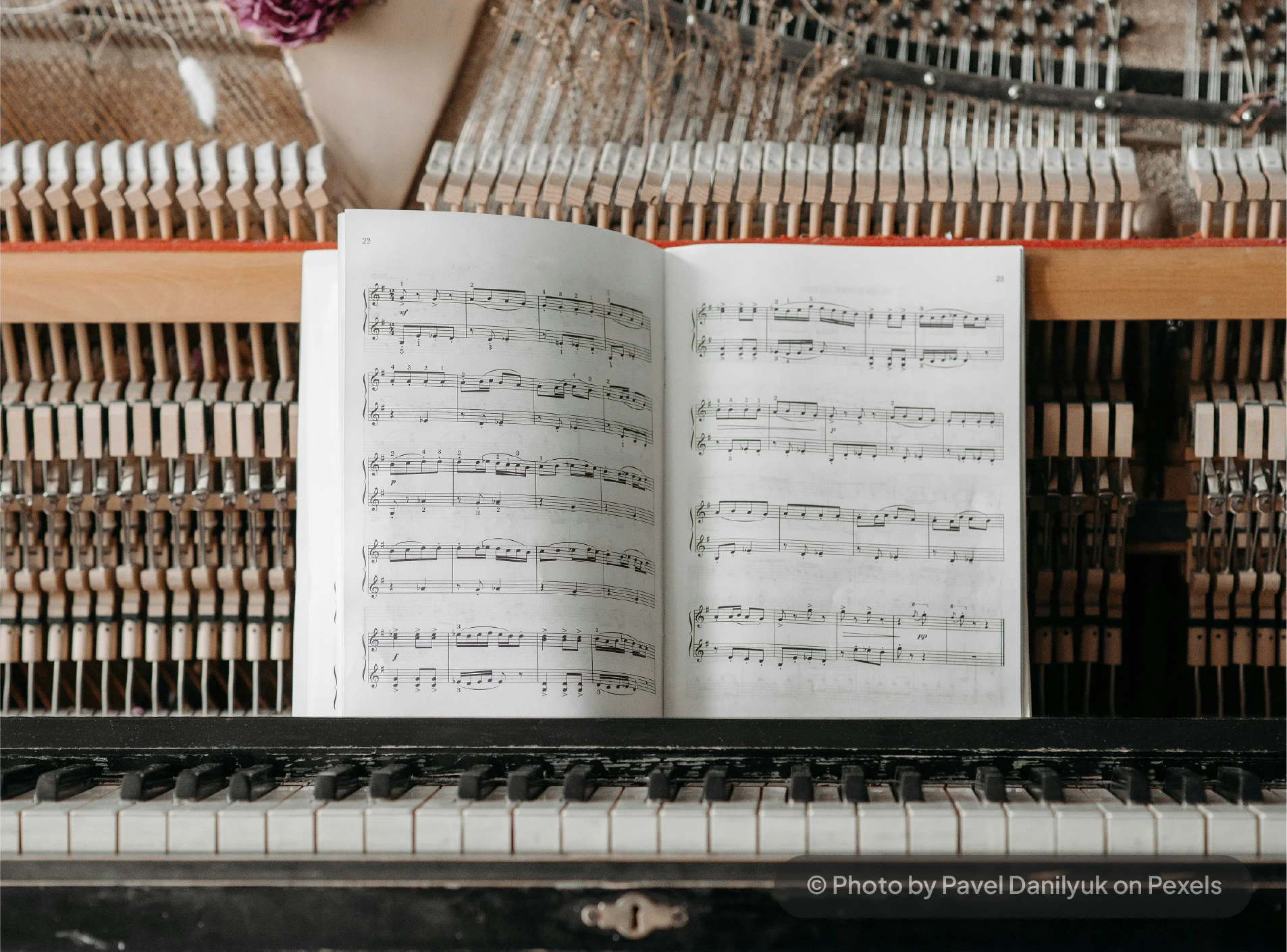
What are chords
Let’s start with the basics. A chord is simply a group of notes played together. Most often, you’ll be playing three notes at once, which is called a triad. These three notes work together to create a certain sound or feeling. For example, some chords sound happy, others sound a bit sad or moody.
Start with C Major Chord
One of the easiest and most common chords to start with is the C major chord. To play it, find Middle C on your keyboard. Now, with your right hand, place your thumb on C, your middle finger on E, and your pinky on G. That’s it! When you press those three keys at the same time, you’re playing a C major chord. Try it a few times until it feels natural.
Understand the Shape of Your Hands and Positions
You’ll notice that the shape your hand makes is kind of like a claw—fingers curved and relaxed. That’s a good habit to develop early. You don’t want stiff fingers or a tense wrist. Keep everything loose and comfortable.
Other Major Scales
Once you’re comfortable with C major, try moving your hand up the keyboard to play other major chords. The pattern is the same: you skip one key between each finger. So for a G major chord, you’d play G, B, and D. For F major, you’d play F, A, and C. It’s like moving that same hand shape to different starting notes.
Playing the Minor Chords
Now, here’s where it gets even more interesting—there are also minor chords. They sound a little more emotional or serious. To turn a major chord into a minor one, you just lower the middle note by a half step (that means moving it one key to the left). So if you’re playing C major (C, E, G), you’d turn it into C minor by playing C, E♭, G.
Once you’ve got a few major and minor chords under your fingers, try switching between them. Start with C major, then move to G major, then A minor. See how it starts to sound like a song? That’s because most songs are built around just a handful of chords. It’s amazing how much music you can make with just three or four.
Slow and Steady
If you want to get your left hand involved too, you can play just the root note of the chord—so for C major, play a low C with your pinky finger in your left hand while your right hand plays the full chord up higher. That adds a nice depth to your sound and gets both hands working together.
Keep in mind that it’s okay to go slow. Let your hands get used to the movements. Practice each chord a few times, then try linking them together into a simple progression. Even playing just two chords back and forth is great practice. Over time, your fingers will remember the shapes, and you’ll start switching between chords without even thinking about it.
So that’s the start of playing chords on the piano. It’s all about shapes, hand positions, and getting your ears used to how they sound. Stick with it, play around with different combinations, and most importantly, have fun with it. You’re not just learning to play notes, you’re learning to create music. And that’s a pretty awesome thing.
Concluding - How to Learn Piano
Learning to play the piano might feel like a big leap at first, with all the keys, hand coordination, and unfamiliar terms—but once you take that first step, it’s more of a journey than a challenge. Bit by bit, finger by finger, note by note—you begin to make sense of it. And then suddenly, you’re not just pressing keys, you’re making music.
Whether you're playing a simple melody with one hand, building strength in your fingers, or experimenting with chords and harmonies, every small effort counts. And the best part? There’s no single way to learn. Go at your own pace, enjoy the process, and let yourself get lost in the sound.
The piano is one of the most expressive instruments out there. It doesn’t matter if you’re aiming to master classical pieces or just want to play your favorite songs—what matters is that you keep playing. Stay patient, stay curious, and most importantly, stay inspired.
On that note, your piano journey is just beginning—and there’s a whole world of music waiting for you. And if you want to learn how to play piano, explore the option to learn piano lessons online.





